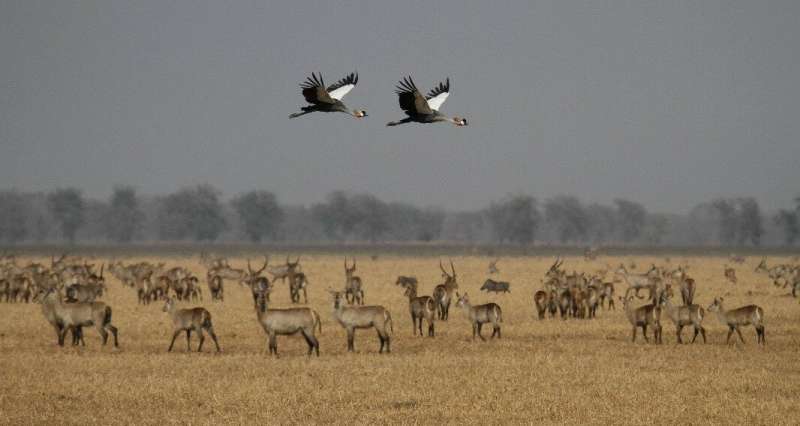Protected areas could help large herbivores bounce back after war

Large herbivore populations can substantially recover after war-induced declines, given that protected area management is provided, according to a study published March 13 in the open-access journal PLOS ONE by Marc Stalmans of Gorongosa National Park in Mozambique, and colleagues. But the community structure may take longer to restore, as the rate of recovery varies for different populations.
To date, it has not been clear how large mammal communities reassemble after being pushed to the brink of extinction. Few data are available to answer this question, as it is rarely possible to document both the decline and recovery of wildlife populations. In the new study, Stalmans and colleagues present the first in-depth quantitative account of war-induced collapse and postwar recovery in a diverse assemblage of large herbivores. In Gorongosa National Park, the researchers assembled data from 15 aerial wildlife counts of nine large herbivores conducted before (1968-1972) and after (1994-2018) the Mozambican Civil War of 1977-1992.
The results showed that large herbivore populations declined by more than 90% during the war. Total biomass has substantially recovered since 1994 and most herbivore populations have increased postwar, but species composition has shifted dramatically. Formerly dominant large herbivores—including elephant, hippo, buffalo, zebra, and wildebeest—are now outnumbered by waterbuck and other small- to mid-sized antelopes. Waterbuck abundance has increased by an order of magnitude, whereas elephant, hippo, and buffalo, which totaled 89% of prewar biomass, now comprise just 23%. These trends mostly reflect natural population growth following the resumption of protection under the Gorongosa Restoration Project, which was initiated in 2004.
According to the authors, the results demonstrate the potential for rapid postwar recovery of large herbivore biomass, given sound protected area management, but also suggest that restoration of community structure takes longer and may require active intervention.
The authors add: "How do large-mammal communities reassemble after being pushed to the brink of extinction? This article presents the first in-depth quantitative account of war-induced collapse and postwar recovery in a diverse assemblage of large herbivores."
More information: Stalmans ME, Massad TJ, Peel MJS, Tarnita CE, Pringle RM (2019) War-induced collapse and asymmetric recovery of large-mammal populations in Gorongosa National Park, Mozambique. PLoS ONE 14(3): e0212864. doi.org/10.1371/journal.pone.0212864
Journal information: PLoS ONE
Provided by Public Library of Science

















